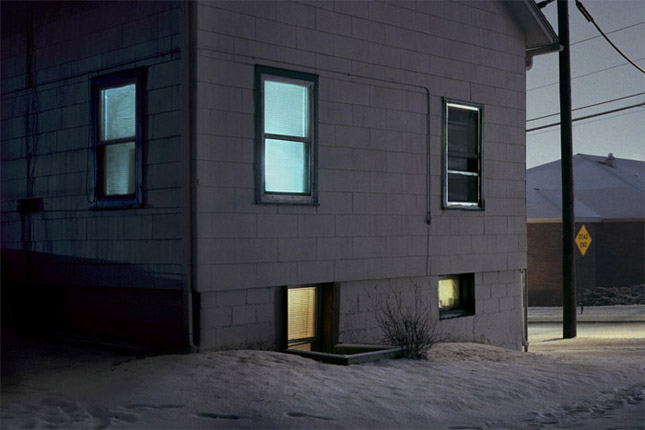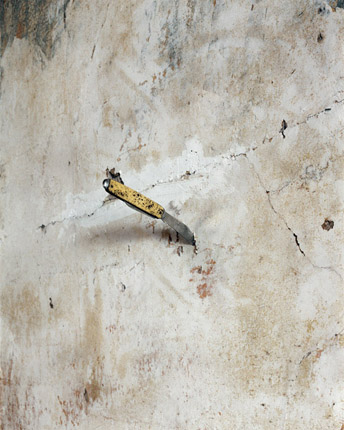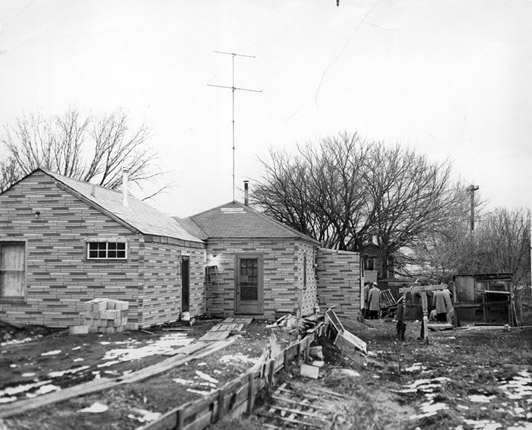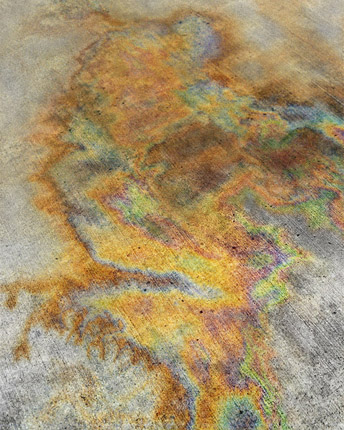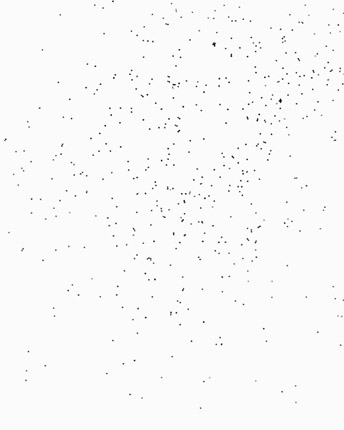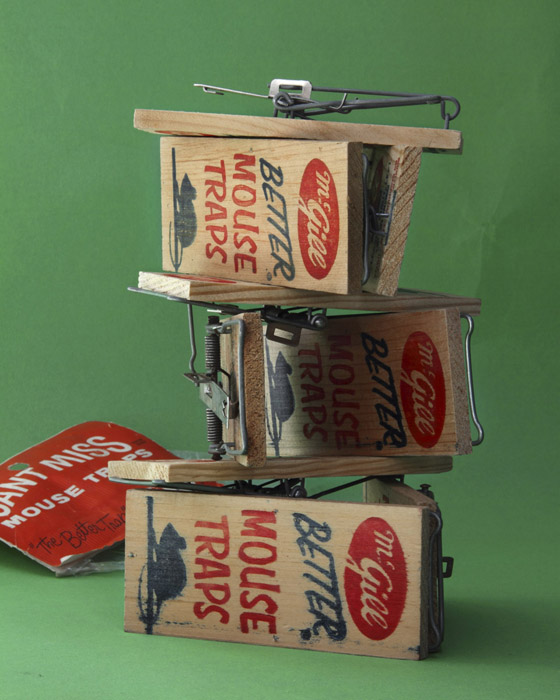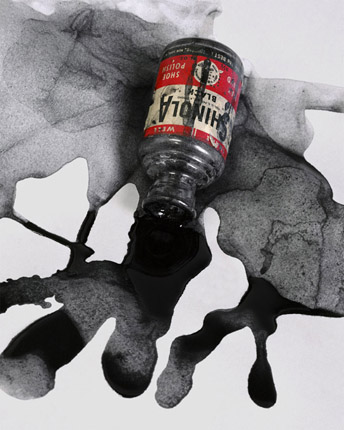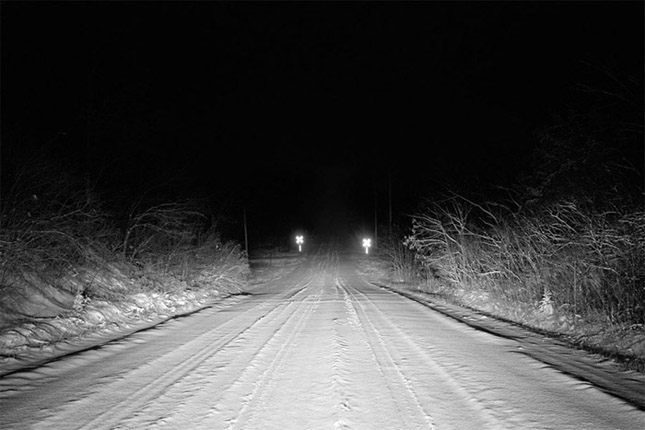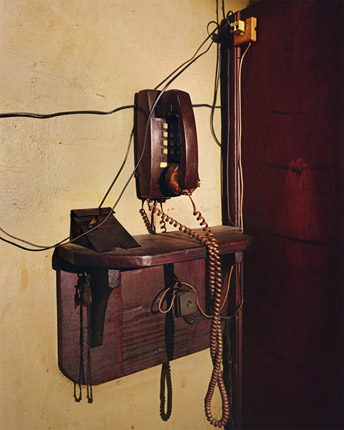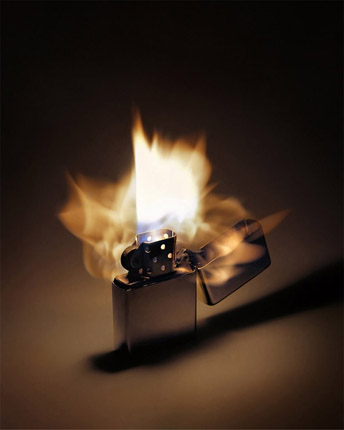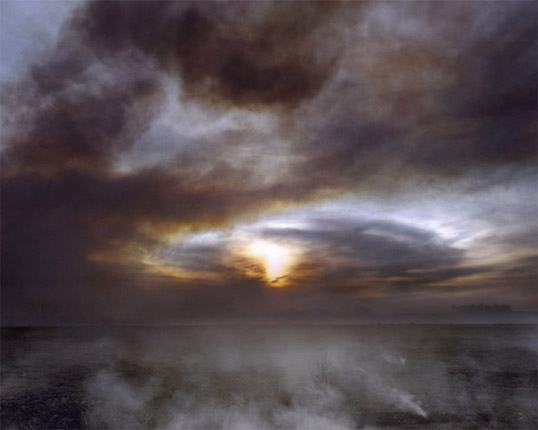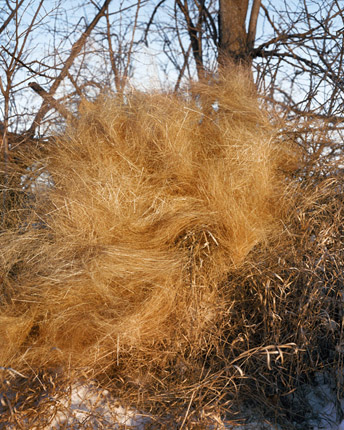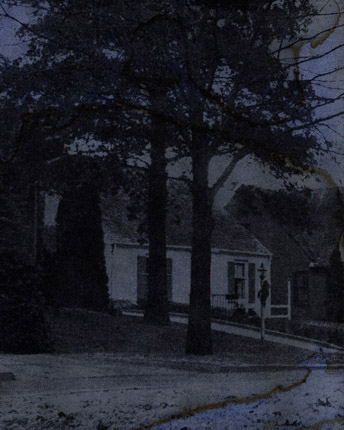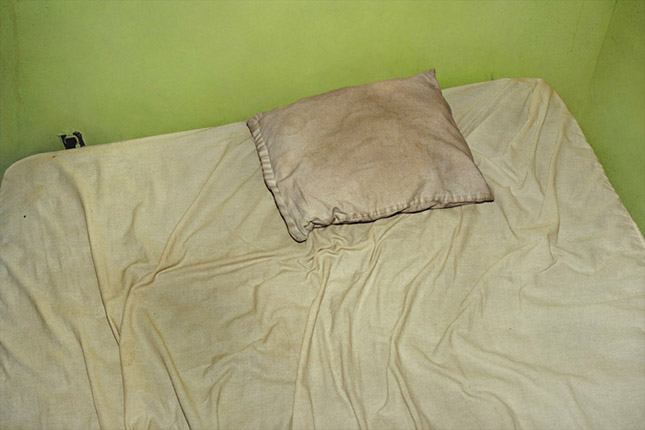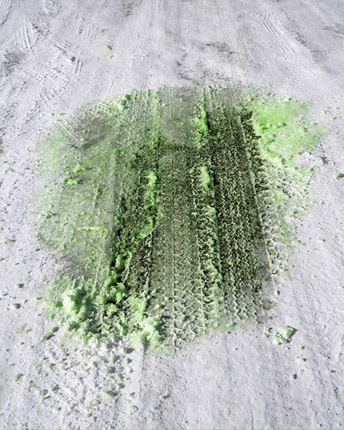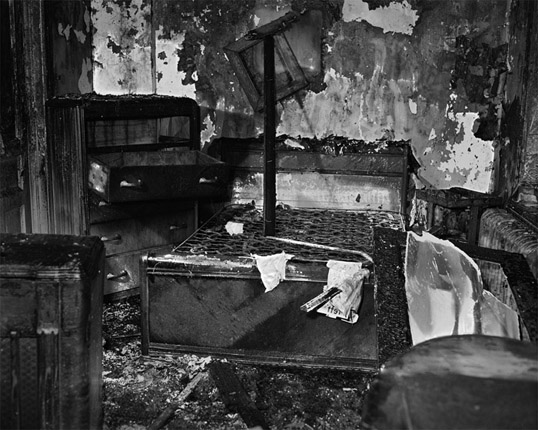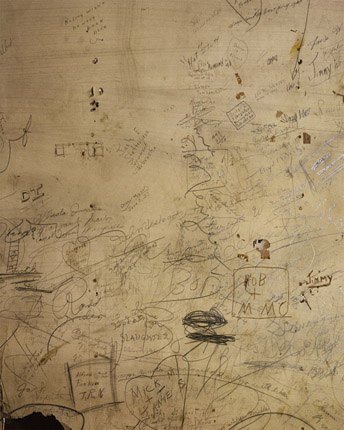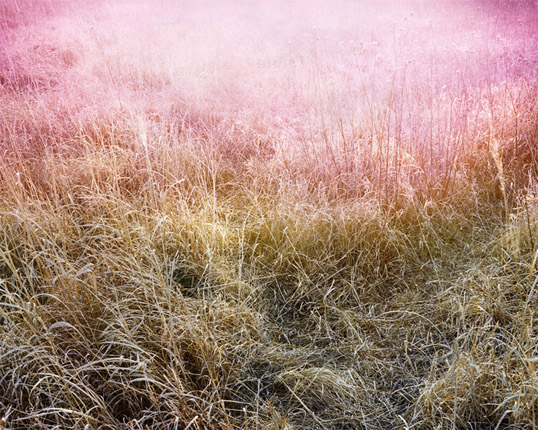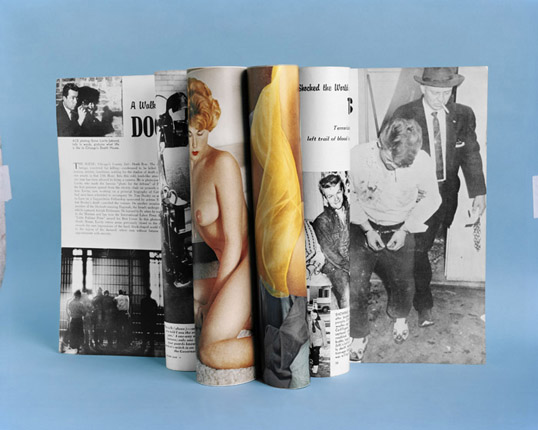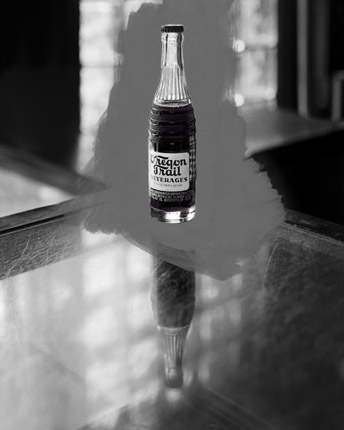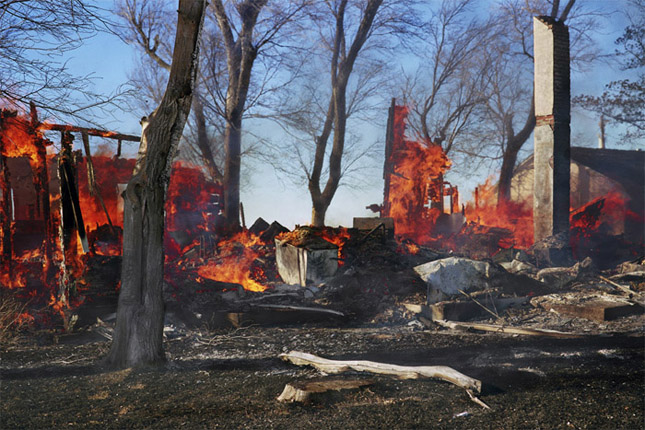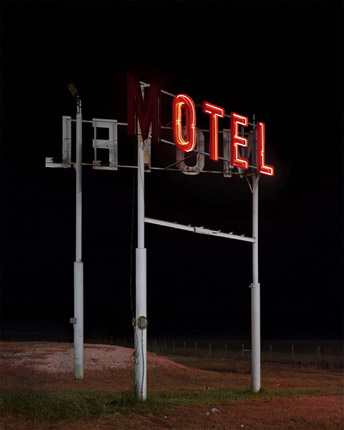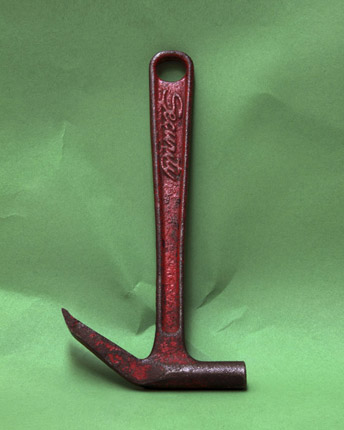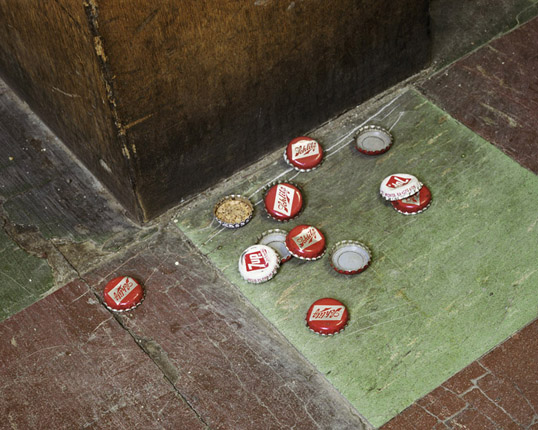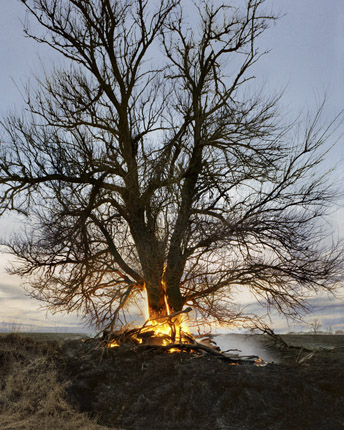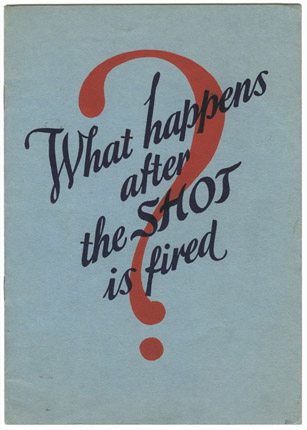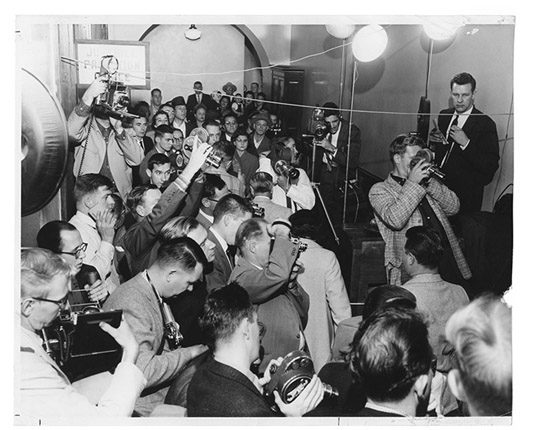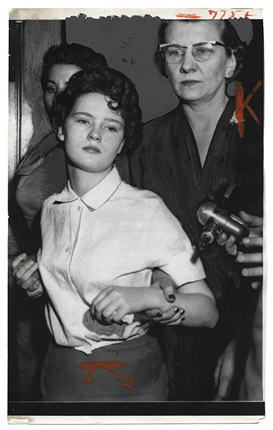Redheaded Peckerwood is a work with a tragic underlying narrative – the story of 19-year-old Charles Starkweather and 14-year-old Caril Ann Fugate who murdered ten people, including Fugate’s family, during a three-day killing spree across Nebraska to the point of their capture in Douglas, Wyoming. The images record places and things central to the story, depict ideas inspired by it, and capture other moments and discoveries along the way.
From a technical perspective, the photographs incorporate and reference the techniques of photojournalism, forensic photography, image appropriation, reenactment and documentary landscape photography. On a conceptual level, they deal with a charged landscape and play with a photographic representation and truth as the work deconstructs a pre-existing narrative.
Redheaded Peckerwood also utilizes and plays with a pre-existing archive of material, deliberately mixing fact and fiction, past and present, myth and reality as it presents, expands and re-presents the various facts and theories surrounding this story.
While photographs are the heart of this work, they are the complemented and informed by documents and objects that belonged to the killers and their victims – including a map, poem, confession letter, stuffed animal, hood ornament and various other items, in several cases, these materials are discoveries first made by the artist and presented here for the first time.
In book form, the work is presented as a sort of visual crime dossier, including pieces of paper which are inserted into the book. The many individual pieces included serve as cues and clues within the visual puzzle. In this way, there are connections that are left for the viewer to be made and mysteries that are left to be solved.
Redheaded Peckerwood is Christian Patterson’s second monograph and was awarded the 2012 Arles Rencontres Author Book Award.
—
In Redheaded Peckerwood Christian Patterson is working out something that hasn’t been done much before, if ever: a kind of subjective documentary photography of the historical past. That requires that the individual pictures be true, as close as possible to the physical details as historically established, while remaining ambiguous and unsettling — because each of them is only an aspect of the story, and because in each of them something is wrong. The accumulation of them, meanwhile, is what thrusts the viewer into the emotional center of the story, in a way you could call novelistic. While each individual photograph pulses, sometimes alarmingly, all by itself, the meaning of the whole only coheres when all of its parts and all the subliminal connections between them have been fully absorbed, a process which takes time and perhaps distance. Redheaded Peckerwood, which unerringly walks the fine line between fiction and nonfiction, is a disturbingly beautiful narrative about unfathomable violence and its place on the land.
Luc Sante, Essay from Redheaded Peckerwood
—
The result is not just a blurring of the boundaries between then and now, or between fiction and non-fiction, but a profound demonstration of photography’s ineffability — and also its power to resurrect a past event and make it relevant for a contemporary audience (…) Above all, Redheaded Peckerwood is a complex and challenging commentary on the photographic medium itself.
Gerry Badger, Essay from The Photobook: A History, Volume III


